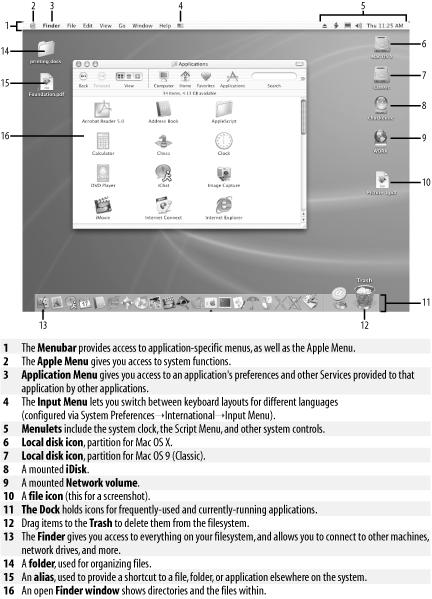There
are actually two interface layers to Mac OS X. One is
Aqua, the system’s native
graphical user
interface
(GUI); the other is a
command-line interface (CLI), which is most
commonly accessed via the Terminal application
(/Applications/Utilities). This chapter provides
a quick overview of Mac OS X’s Aqua environment;
later chapters in the book will introduce you to the Terminal and the
BSD Unix side, with a full examination of these deeper OS layers in
Part V.
Mac OS X offers a feature-rich graphical user environment that makes it easy for people to interact with the operating system. This chapter starts out with a discussion of Mac OS X’s Desktop, and introduces things like the menu bar, the Dock, and basic window controls. Chapter 2 covers the Finder, Mac OS X’s file manager.
When you first log on to your Mac, you are presented with the Desktop, as shown in Figure 1-1. By “Desktop,” we’re referring to the entire screen and all of its interface elements, including the menu bar, the Dock, the Desktop, disk and file icons, and the various windows used by the Finder and other applications.
Get Mac OS X in a Nutshell now with the O’Reilly learning platform.
O’Reilly members experience books, live events, courses curated by job role, and more from O’Reilly and nearly 200 top publishers.


